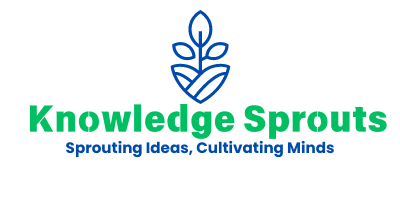Book Appointment Now

Effective Note Taking Methods for ADHD Students
Keeping up with notes in class can be a big task, especially for students with ADHD. It’s known that ADHD can make focusing and recalling information hard. This article will show you some smart and effective note-taking methods for ADHD students, providing ways to take notes that really help.
Prepare to learn and do better!
Key Takeaways
- ADHD students benefit greatly from structured note-taking methods like the Cornell Method. It organizes notes into sections, making it easier to focus and review.
- Visual tools such as mind maps help ADHD students understand and remember complex ideas by turning them into colorful visuals.
- Digital tools like Evernote and Google Drive keep notes organized and accessible across devices, simplifying study sessions.
- These effective note-taking strategies improve focus, information retention, and academic performance, and lessen stress for students with ADHD.
Understanding ADHD and Note-Taking Challenges
Before diving into specific note-taking methods, it’s important to recognize the common difficulties ADHD students face when it comes to traditional note-taking:
- Difficulty maintaining focus during lectures
- Trouble organizing information in a logical manner
- Tendency to hyperfocus on details while missing the bigger picture
- Challenges with time management and pacing
- Difficulty prioritizing important information
- Struggles with working memory, making it hard to hold onto information long enough to write it down
These challenges highlight the need for tailored strategies that address the unique cognitive profile of ADHD students.
The following methods and techniques have been found to be particularly effective in helping ADHD students overcome these hurdles and develop strong note-taking skills.
Effective Note-Taking Methods for ADHD Students
Finding the right way to take notes can change the game for ADHD students. Simple changes and tools make a big difference in staying focused, keeping information sorted, and overall productivity.
These strategies aren’t just about writing things down—they’re about making sure what you learn sticks with you longer than usual.
1. The Cornell Method
The Cornell Method is a structured way to take notes that helps ADHD students stay on track. You start by dividing your page into three sections: a narrow column on the left for keywords and questions, a larger space on the right for main notes, and a summary area at the bottom.
This layout encourages you to think about what you’re writing down, making it easier to review later. It’s like creating a mini study guide every time you listen or read something important.
I’ve tried this method personally during college lectures and study sessions. It was a game-changer! The left column kept me focused during class as I jotted down key terms and concepts.
Later, while reviewing my notes, those same words triggered my memory of the lecture content without having to reread everything word-for-word. Plus, summarizing helped solidify my understanding of complex topics in bite-sized chunks ready for exam prep.
For anyone with ADHD trying to manage mountains of information, give the Cornell Method a shot—it might just transform how you approach note-taking altogether.
Adapting for ADHD Students
- Use color-coding in the cue column to categorize different types of information
- Incorporate visual elements or symbols in the notes section
- Set a timer for regular breaks to maintain focus during note-taking and review

| Related: Download Free Cornell Templates Here
2. Mind Mapping
Visual aids like mind maps turn complex ideas into easy-to-understand visuals. Students with ADHD find it helpful because it matches how their brains work. Mind maps use symbols and images to show relationships between concepts.
This method helps you see the big picture and details at once.
Making a mind map starts with writing a central idea. Then, you draw lines out from the center for related sub-topics. Add symbols or doodles to represent these ideas. This process makes studying more engaging for students who get easily distracted.
It also keeps all important information in one place, making review before tests quicker and easier.
I’ve tried using mind maps for my studies, and it made a big difference. It helped me focus by turning note-taking into an active task rather than just writing down words. Plus, reviewing my notes became faster since I could see connections between different topics without flipping through pages of text.
Benefits for ADHD Students
- Visual representation helps with information retention
- Encourages creative thinking and making connections between ideas
- Allows for easy addition of new information without disrupting the overall structure
- Provides a big-picture view while also including details

Courtesy: Mindmeister
3. Bullet Journaling
Bullet journaling is a customizable and creative approach to note-taking and planning that can be particularly appealing to ADHD students.
Bullet journaling is a method of personal organization developed by Ryder Carroll. It combines planning, journaling, and note-taking into one system.
How it Combines Planning and Note-Taking
- Uses a system of bullets and symbols to categorize information
- Includes monthly and daily logs for planning
- Allows for the creation of custom collections for specific subjects or projects
Customizing for ADHD Needs
- Incorporate habit trackers to monitor study habits and medication schedules
- Use color coding to differentiate between subjects or types of tasks
- Create dedicated pages for brainstorming and mind mapping within the journal

4. Color-coding and Visual Aids
For many ADHD students, incorporating color and visual elements into their notes can significantly enhance focus, retention, and recall.
Using Colors to Categorize and Prioritize Information
- Assign specific colors to different subjects or types of information
- Use highlight pens or digital highlighting to emphasize key points
- Create a color legend at the beginning of notebooks or digital files
Incorporating Drawings, Symbols, and Diagrams
- Use simple drawings to illustrate concepts
- Create flowcharts to show processes or relationships between ideas
- Develop a personal system of symbols for quick notation (e.g., star for important points, question mark for areas needing clarification)
Tips for Creating a Personalized Visual System
- Keep it simple and consistent
- Practice using the system regularly to make it second nature
- Be willing to adjust the system as needed based on what works best
5. Active Listening Techniques
For ADHD students, staying engaged during lectures is crucial for effective note-taking. Active listening techniques can help maintain focus and improve comprehension.
Strategies for Staying Focused During Lectures
- Sit near the front of the class to minimize distractions
- Use fidget tools or stress balls to channel excess energy
- Practice mindfulness techniques to bring attention back when it wanders
Techniques like the Pomodoro Method for Managing Attention Span
The Pomodoro Technique involves working in focused 25-minute intervals followed by short breaks. This can be adapted for lecture settings:
- Focus intently for 25 minutes
- Take a 5-minute mental break
- Repeat the cycle
Incorporating Movement and Fidget Tools
- Use standing desks or wobble chairs when possible
- Keep small, quiet fidget tools handy (e.g., stress balls, fidget cubes)
- Take brief walking breaks between classes or during long lectures (with permission)
6. Digital Note-Taking Tools
In our increasingly digital world, various apps and software can provide valuable support for ADHD students in their note-taking endeavors.
Overview of Helpful Apps and Software
Digital tools can offer features that address many of the challenges faced by ADHD students, such as organization, searchability, and multi-media integration.
Popular options include ClickUp and Notion, both offering great features for organizing and managing notes.
Features that Benefit ADHD Students
- Reminder and alert systems for better time management
- Voice-to-text capabilities for times when writing is challenging
- Easy reorganization and categorization of notes
- Integration of various media types (text, images, audio, video)
- Cloud storage for access across multiple devices
Another great option is Google Drive; it stores everything from study guides to research papers safely online.
Feature/Aspect | Evernote | Notion | ClickUp |
|---|---|---|---|
| Notes Organization | Uses notebooks and tags for organization. | Highly customizable with databases, tables, and pages. | Offers a structured hierarchy with folders and lists. |
| User Interface | Simple and straightforward. | Flexible but can be overwhelming due to customization options. | Feature-rich but may have a steeper learning curve. |
| Integration | Integrates with various apps and services. | Extensive integrations but require setup. | Strong integration with project management tools. |
| Customization | Limited customization options. | Highly customizable and can create unique workflows. | Customizable dashboards but less focus on note-taking. |
| Focus Features | Distraction-free mode available. | Can create focused workspaces but may require setup. | Task-focused, which may distract from pure note-taking. |
| Best For ADHD | Good for quick notes and reminders. | Ideal for creating a personalized system but can be complex. | Best for structured task management, which may help with focus. |
| Pricing | Free tier available; premium features for a fee. | Free tier available; pricing varies by features. | Free tier available; more features in paid plans. |
Benefits of Adopting Effective Note-Taking Methods for ADHD
Better focus and memory come from using the right note-taking tactics. These methods lead to higher grades and less stress for students with attention challenges.
Improved focus and information retention.
Effective note-taking strategies for students with ADHD can help improve focus and information retention. Using the Cornell Method, for example, organizes your thoughts in a structured way.
This method divides your paper into sections for notes, key points, and a summary. It makes review time efficient. Also, adding visual aids like mind maps captures complex ideas more easily than text alone.
When you draw connections between concepts on paper, it strengthens your memory of the material.
Digital tools are another game-changer for keeping everything in one place and boosting attention span. Apps that sync across devices ensure you don’t lose essential information and can revisit it anytime—making studying less stressful and more productive.
These tech solutions encourage regular review without feeling overwhelmed by piles of notebooks or loose papers.
Next, we explore how these methods enhance academic performance while reducing stress.
Enhanced academic performance and reduced stress.
Adopting effective note-taking strategies can help ADHD students zoom in on what’s important, making study time more productive. Methods like the Cornell Method turn messy notes into a structured format, which improves understanding and retention of knowledge.
This structure not only aids in focusing during class but also simplifies review before tests. As a result, students often see their grades go up.
Using tools such as concept maps and digital apps to take notes brings complex ideas down to earth. These visual aids are a game-changer for grasping difficult concepts without feeling overwhelmed.
They make learning interactive and less stressful by breaking down information into manageable pieces that are easier to digest. Less stress means more energy to focus on achieving higher academic goals, leading to a positive spiral of confidence and success in schoolwork for someone with ADHD.
Conclusion
Discovering the right way to take notes can open new doors for students with ADHD. With the right tools and methods, every student has the chance to shine brighter in their academic journey.
For learners dealing with attention deficit hyperactivity disorder, traditional note-taking might not cut it. That’s where methods like the Cornell Method and digital tools step in to help organize thoughts more effectively.
Using strategies specifically for ADHD, such as mind maps or synced notes across devices, empowers these students to capture complex ideas without feeling overwhelmed. Such approaches also allow revisiting and reviewing content in a way that enhances understanding and retention.
I’ve tried many techniques over time; using visual aids significantly helped me keep track of important stuff my teachers said – making learning stick better than before. This isn’t just about jotting down words; it’s about creating a personal knowledge management system that aligns with how the ADHD brain works best.
FAQs
1. What is the best way for ADHD students to take notes effectively?
ADHD students can benefit from a variety of note-taking strategies, such as using technology, flashcards, or mind maps. Each method helps manage time and maintain focus by catering to the brain’s ability to handle information differently.
2. How does note taking help people with ADHD?
Note taking can aid in managing persistent patterns of inattention common in ADHD. It supports executive functions like time management and reduces procrastination by helping you remember important details.
3. Are there any specific methods that work well for ADHD note-taking?
Yes! Using visual aids like mind maps or doodling something relevant while listening can be helpful. You may also want to try hierarchical notetaking where you organize information based on importance.
4. Can reviewing notes later help adults with ADHD?
Absolutely! Reviewing your notes within 24 hours boosts retrieval skills and reinforces what you’ve learned – an essential study skill for everyone, particularly those whose brains have impaired focusing abilities due to ADHD.
5. Is it okay if I don’t write everything my teacher says during class?
Indeed! People with ADHD often struggle with impulsiveness so trying to jot down every word doesn’t always work well – instead focus on capturing key points which will help you understand better when reviewing later.
6. Does sharing notes offer any benefits for students dealing with learning difficulties related to ADHD?
Yes, sharing notes could provide different perspectives on the same topic – this might reveal new connections between ideas that weren’t apparent before, aiding comprehension and recall.



